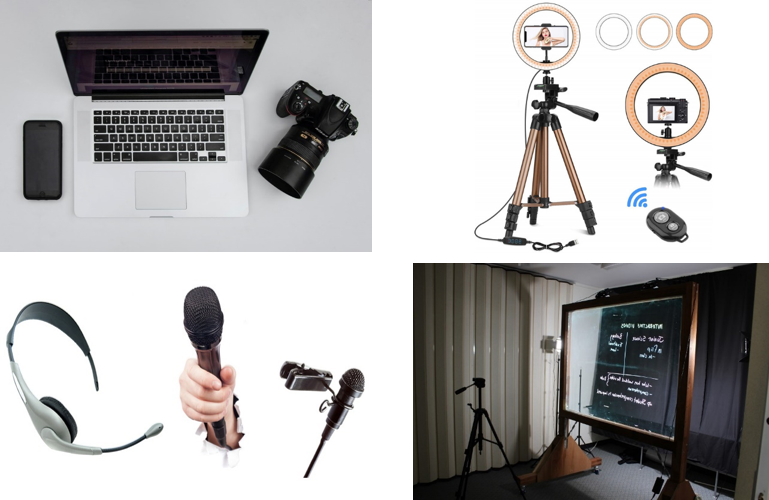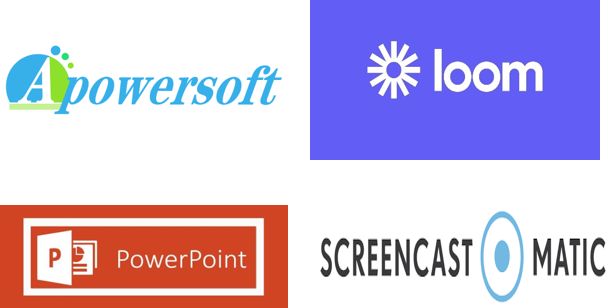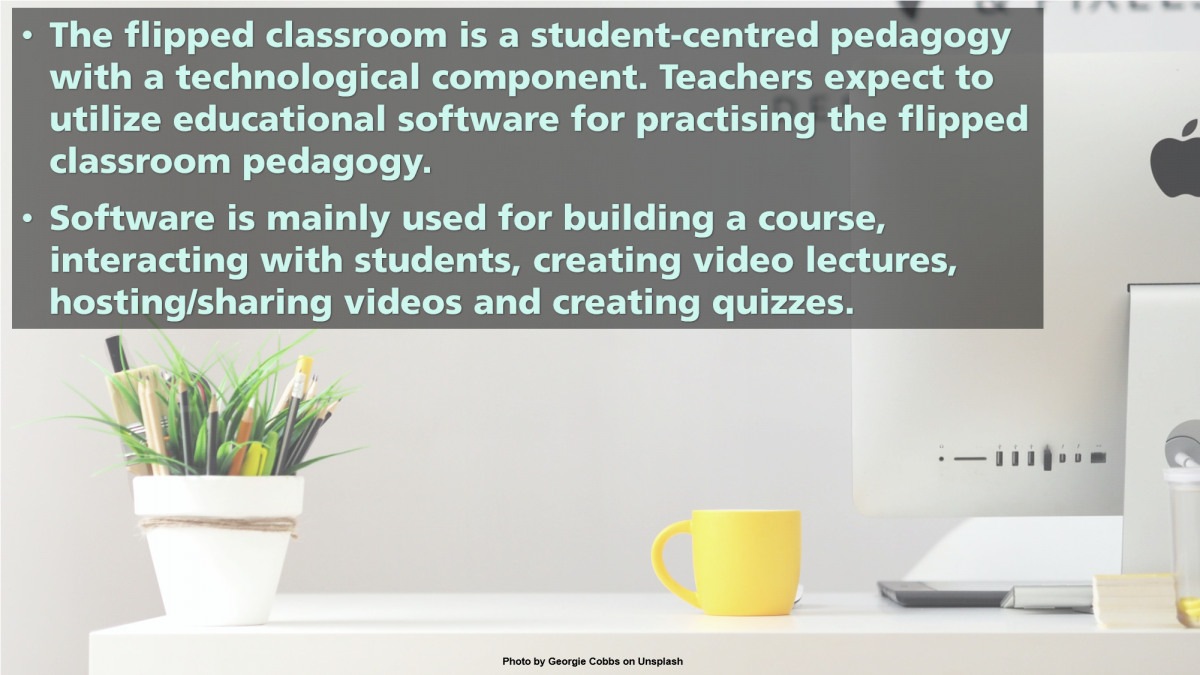Software for building a course
Learning management systems (LMS) are indispensable interactive spaces that allow course building, group chat, creating assessments and sharing learning resources.
LMSs are powerful tools for activating student-centred learning outside the class (mainly during the pre-class and post-class periods).
Examples

Software for interacting with students
Teacher-Student interaction is more important to succeeding in a flipped classroom or any student-centred pedagogy.
The LMS provides an opportunity to communicate with students.
Alongside the LMS, some software enables teachers to make virtual communication with students.
Examples

Tools for recording your lecture
Flipped classroom pedagogy adds an additional role to a teacher as a material creator.
Teachers are responsible for creating flipped classroom learning materials in various forms, such as video lectures, narrated PowerPoint (Screencasting), animation (illness scenario) and video demonstrations of the nursing procedure.
As a teacher, you can choose recording devices using a sophisticated DSRL camera to connect with a smartphone or using a web camera on your laptop. You also have the freedom to choose a shooting spot from an ideal Audio-Visual studio to your office table.
However, it would be best if you:
- Avoid using a distracting background
- Check your audio quality
- Ensure there is adequate lighting
- Aim to promote viewers’ attention
Below are the mentioned tools that can be useful for recording your lecture

Software for editing the video
Once the video is captured, there are several free software options that enable you to edit the video clip. This includes adding sound, trimming the clip, adjusting motion, inserting text/subtitle, and merging the clips.
Example: DaVinci Resolve (Free), Windows Video Editor (Free for Windows users) and Adobe Premiere Pro

: https://www.blackmagicdesign.com/nz/products/davinciresolve/ | https://tinyurl.com/ygyx6xod
Software for creating narrated presentation and screencasting
Many software options allow you to create narrated presentations by capturing slideshow/screen, adding voice over the presentation, and embedding the webcam videos.
There are a few free screencasting software options for your use:

Software for editing recorded audio
Audacity is free and open-source software that enables us to do voiceovers and edit recorded audio.

Software for creating interactive videos
Interactive videos are a form of digital video clip that enable the students to interact with the linear video.
This interactive clip plays like a regular video file, but students can click, drag, scroll, hover, gesture, and complete other digital actions to interact with the video’s content, similar to how they would interact with web content.
Therefore, teachers can embed learning tasks with interactive videos such as making a quiz and ensuring there are text explanations.
Useful software for creating interactive videos:
Software for creating animation
Another tip for gaining learners attention is creating videos with animation. The process of creating an animation consists of 5 steps: planning, adding the soundtrack, adding visual effects, checking, and publishing.
The following software can enable us to create simple animated videos:
Tools for uploading the video
There are online platforms that allow us to upload our videos and share them with others. The video-sharing platforms provide a shareable link for embedding files into the Learning Management System.
Examples

Tools for creating quizzes
There are web2.0 applications that allow us to create gamified quizzes for in-class activities.
For pre-and post-class activities, generic quiz making tools useful for getting individual responses. This short generic quiz maker is already inbuilt in LMS.
Software for creating gamified quizzes

Software for creating a generic quiz
Software for student poll or survey
Tools for sharing key points in-class activities
Word cloud creation applications are used for visualising key points / main ideas about a topic.
To do this, cloud images are twisted with words, which helps with visual recall and understanding for visual learners.
Examples
Using existing videos for flipped classroom
There are educational repositories and online libraries that can be used for existing videos in your teaching.
You need to be aware of copyright issues when using others’ videos in your teaching.
Example educational repositories:






